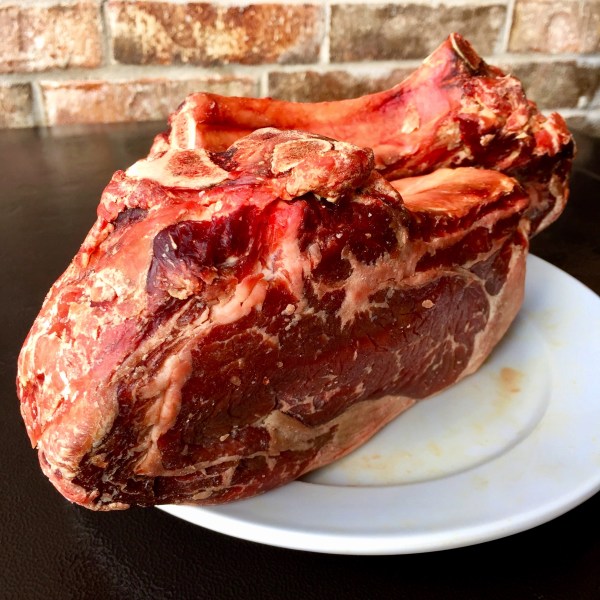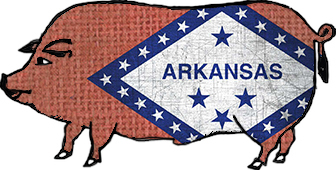While I’m sure such strong desires go back at least as far as our caveman (and cavewoman) days, steak has certainly had a special place in my own food memories going back to my childhood. Truth be told, we didn’t have much growing up (other than lots of kids and two hardworking parents), but every birthday I was allowed to choose my meal. And every birthday that meal was steak, green beans, and a baked potato. Now I’ve grown up since then, and don’t eat red meat with much regularity. But when I do, I make sure that steak is great by following The Steak Rules.

I like lots of different steaks: ribeyes, porterhouses, strip steaks… but I sometimes worry that I should limit the amount of red meat I eat. No, not because it’s unhealthy, but instead because I love it so. What if I ate it everyday and then grew tired of it? What then? Would that love become like the long slow dwindling fire at the end of a week’s camping, instead of remaining the hot fire of summer love? I think that hot fire of summer love is better.
But I suppose like any relationship, there are rules. Grilling the perfect steak is easy. You just need to follow The Steak Rules:
1. Buy the right steak. Remember: Fat is flavor. Lots of folks like filet mignon, but not me. Filet mignon is a dry steak lacking in fat, which is why you usually see it wrapped in bacon or covered in sauces. What I find most important to selecting the perfect steak is marbled fat. I am talking about thin strands of fat that curl throughout the meat, not big white gobs of packed fat. If you’ve ever seen a kobe ribeye, you know just what I mean. The thin strands of fat will melt as you cook it, leaving a super juicy steak. (The big fat gobs melt too, but seem to leave holes in the steak when they melt.) For me, I like ribeyes. They are well marbled with fat, so when you grill it, it stays nice and juicy. Another good choice is a marbled strip steak. You can even go for a porterhouse steak, which has a strip steak on one side of the bone and a filet mignon on the other side. Whatever you do, when you choose your steak look for thin curls of fat throughout.

2. Buy it fresh, and from a place you trust. I don’t buy steaks at my normal grocery store. I don’t eat a nice steak very often, so when I do I like to go to my local butcher’s shop because they cut a lot of meat, and cut it fresh. I like that I can ask them to cut me a two-inch thick ribeye, and they can just go in back and do it. That’s great. So ask your foodie friends where they buy their steaks, but remember, it’s not about price, it’s about quality.
3. Buy it thick. When making a great steak, you want to buy it thicker, so that it can withstand the grill marking process over high heat and not end up with a burned piece of leather in the end. (Of course if you like that, don’t waste your money on a great steak.) I like to buy steaks at least 1 1/2” thick, 2” is even better. A 2” thick ribeye will easily feed 3 people or more if your side items are really great. (I like to grill those sides when I can. Here’s some grilled asparagus squeezed over the top with some grilled lemon halves. Hit it with some fine olive oil and some great salt, and you have a killer side dish!)

4. It’s ok to age it. I like this trick. I buy my steaks nice and thick and then air dry them outside of the package on a tray in my refrigerator. I turn the steaks once a day, and make sure that the kitchen tongs are clean when I do so. The cool dry air of the refrigerator draws moisture out of the meat, creating a meatier steak more concentrated in beef flavor. It also dries out the outside edges of the steak, which leads to a nicer crust. Try it; I bet you’ll like it. This steak has about 11 days of age on it. I’ve heard of restaurants aging over year!!!

5. Keep it cold until you cook it. I want you to keep that steak cold (but not frozen) not just for food safety reasons, but becuase we are going to put it on a very hot grill and keep it there long enough to make nice grill marks on all sides.
6. Season it evenly on both sides before you grill it. Here you get to use whatever you like! I like lots of different things, but whatever I use I like it to be a well-flavored seasoning. I often use Jess Pryles’ Hardcore Carnivore Black, which is a nice and salty-garlicky seasoning with activated charcoal that gives your steak a nice dark black crust.

Other times, I like just salt and pepper, or even a nice seasoning salt.

Try out different things, until you find exactly what you like.
7. Clean your grill before you load it and light it. It’s probably fine to get it good and hot and then scrub it with your grate scraper, but I prefer to do this before I light it at all—and before I put coals in the grill. Use your grill scraper or a piece of steel wool to scrub your cool grates to remove as much char (old food) as possible. I don’t use any cleaners (well other than good old elbow grease) when I do this, since I don’t want to chance eating any cleaner. Once they’re clean, you’re ready to fire it up.
8. Get your grill as hot as possible, but avoid setting fire to the meat. (I’ve done that cooking for friends when I used both coal and wood to grill over. Flames a’plenty, but I carbonized much of the steak. Don’t do this!)

I like to grill over charcoal, but if you have a gas grill, go ahead and use it! Crank it up for about 15 minutes as hot as you can get it, then lay your steaks down.

For charcoal, I fill up my charcoal starter/chimney. That looks like a giant metal cup with a grate at the bottom.

Sometimes I even cook over the charcoal chimney itself!

It can get super hot!

9. Lay it down on the grill at a 45 degree angle to the grates. What this means is that if your grill grates are running straight towards you from 12 o’clock to 6 o’clock, lay your steak with the right end at 2 o’clock and the left end at 7 o’clock.
10. After a few minutes, turn it so that it angles 45 degrees the other way. (So just turn it—don’t flip it over!—so that the left side is now at 10 o’clock and the right side is at 4 o’clock.)

11. Now flip it over and turn it at a 45 degree angle to the grates.
12. After a few minutes, turn it so that it angles 45 degrees the other way from the grates.
13. Pull out your instant read thermometer and check your steak’s temperature. You want to cook it to 130 degrees for rare (my favorite!), 135 degrees for medium rare, 145 degrees for medium, 155 degrees for medium well, and over 155 for well done. When you rest your steak in the next step, it will continue to rise a few more degrees, and then fall. I like to pull my steaks off the grill about 3 degrees before they’re done.
14. Pull it off and let it rest for half the total time it was on the grill. I know, it’s hard, but resting the meat is important because if you cut it as soon as you take it off the grill the juices will run out all over your plate—leaving a messy plate and dry steak. So make sure you let it rest before you cut into it. Here’s what I do: take a piece of foil a little larger than the steak, say 3” longer on each side, and simply “tent” that over the steak by covering the steak without fully enclosing it in. I place it over the steak and carefully fold the tin foil down so that the steak has foil on all sides, but is not fully enclosed.

15. When it’s a steak relationship, it’s ok to cheat. Sometimes you don’t have charcoal. Or you only have a gas grill. Or you’re inside and it’s cold outside and you’d rather not bother (for shame!!). Or it’s Tuesday and the kids are hungry and …. Ok, I get it. You can do this inside on your stove. Here’s how:
- Get your heaviest bottomed pan and put it on your largest stove burner. I like to use my cast iron pan, but use whatever you have that has the thickest bottom.
- Keep the pan dry—no oil—and get it good and hot. You might want to open your windows for this one… it gets my kitchen smoky. (You can test the heat of the pan by dropping a drop of water on the pan. If it dances and sizzles, the pan is hot enough to cook on.)
- At that point, lay your thick, cold steak onto the pan. You’re not going for grill marks here, just a nice crispy crust on top and bottom. So place it and leave it. Don’t you dare touch it, turn it or pick it up for at least 3-4 minutes. Seriously. Stop it.

- When you go to pick it up, the steak should not be stuck to the pan, instead it should have a nice crust and pull up evenly. If it does stick to the pan, set it back down for another minute or so. That will allow it to build the crust you want. Then flip it over and crust the other side.

- Once both sides are crusted, turn the burner down to medium or so and check your steak’s temperature. Take it to about 3 degrees below where you want it, then pull it off and rest it like above. Enjoy!

Leave a Reply